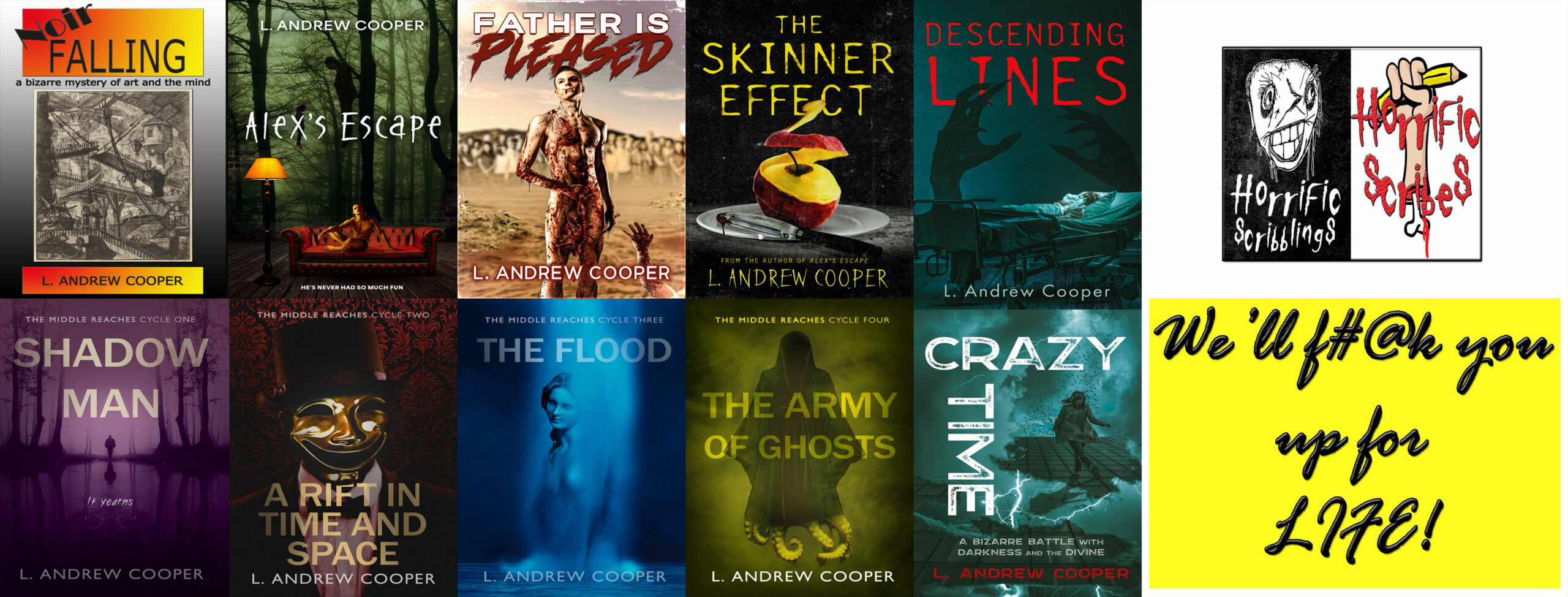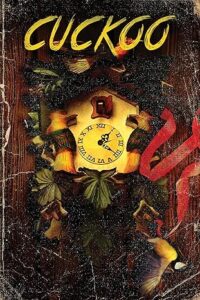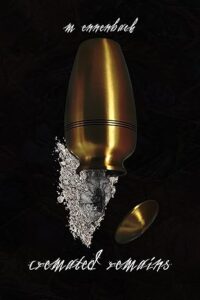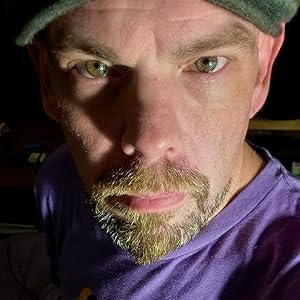M. Ennenbach discusses his masterful dark novel Cuckoo, a love story unlike any you’ve ever read.
Cuckoo
Have you ever been in love? Truly, madly, deeply?
Only to lose it? Your tether suddenly snapped.
How broken can you become?
And how can you ever hope to piece yourself back together?
This is a love story.
The Interview
1. Time I: Fragmentation. Cuckoo’s table of contents reveals that chapters alternate among “Now,” “Before,” and “After,” presenting time in a non-linear fashion. Even within chapters, narration doesn’t necessarily follow strict timelines. Why did you decide on this approach for telling your main character’s story? The cuckoo clock is one of your title’s references. What’s the importance of clocks in Cuckoo? Does Cuckoo have a specific “theory” of time to convey? If so, what is it? If not, what will your readers gain by adapting to your unusual approach to temporality in storytelling?
ME: The use of different timelines was a way to keep the reader as off balance as Cuckoo. The farther in we travel with him, the more he loses, the more erratic the world becomes. But the madness bleeds in everywhere. It was always there. Despite what seems so far-fetched, the truth is also always there. The imagery of the tit, and the clocks, was the original image in my head when I had the idea for this experiment. And I am of the mind that time is useful, but it is also imaginary. A construct we invented to assert control over the chaos. For all the good it is used for, it is just as detrimental when given too much power to control us. The dichotomous nature felt right at home.
All that said, there was no plan. I knew it took place in three periods, but until the first transition, I wasn’t aware how they interplayed. It was very much an intuitive, stream of conscious experience. I knew certain things I wanted to incorporate, but it mostly was based on feel. When the tension hit the right note, or the happiness, it was time to switch. An ebb and flow I surfed as I caused the story.
2. Isms. Cuckoo’s fragmentation of and meditations on time kept me thinking of High Modernism, and since I’m a nut for late Henry James, Virginia Woolf, and William Faulkner, these were good thoughts. However, I also kept thinking of the surrealism of Joseph Heller’s Catch-22 (1961) and Adrian Lyne’s film Jacob’s Ladder (1990), not to mention Dali and Bunuel, and then all the questioning of what is real and presentation of multiple realities made me think pure postmodernism. How much do you think Cuckoo relates to each of these isms? Do you identify with any ism in particular? Why or why not?
ME: Absurdism. This entire idea came from Kharms, a Russian absurdist. His stories and plays were mediocre, but his ideas got to me. He questioned if what we write is fiction, then literally anything we write is possible. I’d wanted to play with the unreliable narrator trope, and this struck me as the ideal point. If the narrator is unreliable, but every word he says is the truth, as he remembers it, is he unreliable?
Beat is also a big influence on it. So a combination of the isms, really. Brautigan, Kerouac, Corso, all the way to Hunter S Thompson. They combined philosophy and fiction, blurred the lines between honest account and story. So many things have inspired and formed the foundation of how I view the world and stories. The need to make the reader think and contemplate more than just the tale on the page.
3. Yellow. Yellow is very important in Cuckoo. It is also important in Gilman’s “The Yellow Wallpaper” (1892), Chambers’s The King in Yellow (1895), and, for that matter, Dostoyevsky’s Crime and Punishment (1866), and in all cases it seems related to madness and degradation. Why yellow in Cuckoo? How does it operate? What makes a color scary? In addition to repeating yellow, you also repeat sounds (such as tearing Velcro) and other sensory information in key moments that signal changes in perceptions of a situation. Why does such sensory information become so important in these moments?
ME: You listed so many great uses of yellow, and whenever someone mentions the use of the color to me, it is always something different they were reminded of. This is a testament to the power of color. Nature uses it as a warning system, and deep down, we do as well instinctively. It gets lost in writing, emptied as words if not given a chance to kindle those buried feelings. By repeating the colors and sounds, it gives them weight, depth. Then they color everything with unease and tension.
I went to a panel once about body horror some of my friends were speaking at. Christine Morgan, one of the queens of horror, made a great point about writing to the other senses as well. The smells. The sounds. Tactile sensations. She was right. The words are two dimensional, but the feelings are there.
4. Mental Illness. Thanks to Poe and others, romantic notions surround the idea of “madness,” especially when love (or love lost) gets involved. To what extent does Cuckoo indulge in a romantic view of madness? It’s certainly not limited to such a view, as cues throughout the book indicate that the main character has not only a diagnosable but a diagnosed condition. A reference to being manic appears early on, other characters inquire about his sleep patterns, and questions eventually arise about his meds. Do you have a specific diagnosis in mind? If so, what is it, and what inspired you to write about it? If not, what do you think the cluster of symptoms you describe adds up to?
ME: I am bipolar, with borderline personality disorder. The BPDs, as I call them. I am also very open about it because I don’t believe there is a stigma on it. I am not embarrassed. I hope being so open about it allows others to see they are not alone in their struggles. It can be very lonely thinking no one understands how you feel. I took my lifetime of trying to understand my own brain and went to the worst-case scenario with Cuckoo. I have gone into some very severe spirals, where I was lost and felt no hope of ever being found. I went there for three months for this. I can’t write something if I do not feel it. If I didn’t, how can I hope to make the reader? I liken it to method acting. Emotionally grueling, but the best art comes from that place where pain and discomfort meet in a flash of blinding beauty.
I’m not sure about romanticizing it in this context. I never considered it. As much as I’d like to normalize being open with mental issues, this was more the rabbit hole than anything else.
5. Time II: Trauma and Repetition. At least one condition from which your main character seems to suffer is PTSD, as details from a traumatic childhood as well as from more recent traumas appear throughout the narrative. To what extent is Cuckoo an exploration of trauma and its lasting impact? One of PTSD’s best-known symptoms is a tendency for the mind to repeat, or relive, traumatic moments. Although moments seldom repeat identically, repetition is a key factor in your novel’s structure along with fragmentation. Do you see trauma as a source of your narrative’s repetitions and other non-linearity? Why or why not? The novel’s description (above) asks, “How broken can you become?” How broken is your main character? Is he a broken clock? Are some traumas beyond repair?
ME: Absolutely. It all plays into each other. We become so consumed, the original act becomes a myth and can lose its entire original meaning. It’s in the varied repetitions where we find glimmers of truth as we fall farther from answers that could ever hope to satisfy.
I think Cuckoo was as broken as possible, by himself, the world, loss; you name it, and it added up. But through everything he lost, he found himself as he went along. Was he repaired? Are any of us? That’s subjective based on personal feelings, I think. We don’t make it out of life alive, or unscarred. The completion for him was finding someone whose strengths balanced his weaknesses. Someone who made him feel like who he could be Unfortunately, that went sideways.
6. Metanarrative. One of the more postmodern aspects of Cuckoo is narrative self-consciousness, the story’s reflection on itself as a story. For example, the narrative voice sometimes reduces story elements to typical, repeatable elements, and it also comments on the story’s progression and qualities, referring to being “not even halfway in” or to things getting “weird.” Why did you include this degree of narrative self-consciousness? How conscious do you want readers to be about the fact that they’re reading? Do you see metanarrative as another tool for foregrounding the unreliability of your main character? Why or why not? Storytelling is, indeed, part of your story: without spoilers, what can you say about Cuckoo’s views on the power of storytelling?
The one thing I did not want to do in this was hold the reader’s hand. To spoon-feed them the story in a way that made it easy. I felt acknowledging the reader was a way of letting them know they weren’t alone in the confusion. In the pain. I found it to be effective, in the same way as switching time, to maintain the off-balance nature.
7. Poetry. Your bio (below) identifies you as a poet, and you put those skills on full display in Cuckoo, including passages of more traditional poetry (with line breaks) and passages of what I can only call prose poetry, beautifully descriptive writing that follows associational patterns of imagery (in regular prose-paragraph form, mostly in the “Now” sections, if I’m not mistaken). Do you agree that some of the prose passages also deserve to be called poetry? Why or why not? Why did you decide to include poetry in this novel? What prompts the poetic interludes, and how do they help convey aspects of the main character’s personality and psychological state?
ME: This may be the easiest to answer. I never considered writing fiction, not seriously. But I cannot stop writing poetry. I don’t care for a lot of poetry despite its power over me, which probably sums up my bipolar nature as aptly as anything could. I love Bukowski and Plath. What I discovered was, both wrote at their most brilliant when they found a way to make poetry and prose one. Pulp by Bukowski IS his poetry in prose form. And The Bell Jar? Sylvia’s cutting wit is on full display and so layered in the prose, it simply is the prose. I was trying to write stories based on convention, but in doing so, I hampered my strengths. I had experimented with stories, “Ascomycota” in dreamwhispers is one where I tried to blend them, and felt it was a success.
I am a poet. Despite what I write, it is so ingrained, it will come out in my tendencies. I am particular. Word choice matters. I’ll stop writing if I can’t find the correct word for the situation. It is very much about how everything flows for me. I stopped trying to rein it in. I harbor no illusions of being a best seller. But I can be authentically me. My hope is someone reads Cuckoo in a hundred years and is inspired to take the mold and shatter it. I don’t believe an author shines as brightly as when they write unabashedly in their own voice.
8. Horror/Love. Uncomfortably Dark Horror published Cuckoo, and “Dark Fantasy Horror” is one of its categories on Amazon. Cuckoo certainly isn’t a conventional horror novel, and I wouldn’t say it’s only horror, but in what ways would you say it is horror? What’s the scariest thing about it? The description (above) claims, “This is a love story,” a claim that the narrative tests a few times. What would have to be true for it to be a love story? How are love stories and horror stories related? If it is a love story, what inspired you to write a love story that is so… uncomfortably dark?
ME: I don’t really consider genre much going into a story. I was never really convinced Cuckoo was horror. Horrific? Yes. Brutal emotionally? Definitely. It was everyone who read it originally who told me it was horror. I can see it now, but to me it is a love story. The purity of love shining through the darkness.
The best horror stories have an element of love because love can mean so many things. Obsession. Desire. The need to protect the most important person in your life. The failure to do so. Dracula wanted his beloved. Had The Creature been shown love, wouldn’t Frankenstein have ended differently? Friday the 13th was about a mother’s love. Nothing is as rewarding, or as painful, as love, which leads its power to horror perfectly.
All of my stories in dreamwhispers and Cremated Remains have a theme of love in them. My poetry as well. It has been my life’s pursuit, and my favorite shade to color with.
9. Healthy Love? Your main character reflects on how lost he’d be without the woman he loves, how incomplete he’d be—in sum, he says early in the novel, “We became one.” While I find his passion is vivid, fascinating, and moving, I also wonder if the way he loses himself in her is healthy. Do you intend to shine a critical light on passion so strong that it leads to losing oneself? Why or why not? For love to reach its peak, does it need to be impossible—star-crossed, as the Bard might say? Early on, your novel also brings up the fear of dying alone: what does that fear have to do with love?
ME: It speaks on how much emphasis we put in the hope someone can love us for the messes we are. I think of their love as healthy, just unfortunately, between two unhealthy people. We all want love, to be loved. I think we all lose ourselves, in the beginning at least. I am a hopeless romantic, though, and I hope it isn’t as much losing yourself, as finding a new dimension to grow into. Becoming something better than you were. Everything is crazy, if you boil it down. Electrified jelly, soaked in chemicals, piloting a meat suit with skewed perceptions. Love, for its insanity, makes a certain sense.
10. Access! How can readers learn more about you and your works (please provide any links you want to share)?
ME: My blog, mennenbach.com is where I do most everything. Daily poetry, book updates, my about page links to Amazon and my shirts and stuff.
About the Author
M Ennenbach is a poet and writer from Texas. dreamwhispers, an evocative collection of short fiction, and Cuckcoo are available from Uncomfortably Dark Horror. A half dozen poetry collections are available from Potter’s Grove Press as well as his blog https://mennenbach.wordpress.com/about





